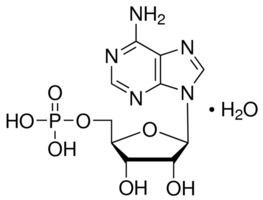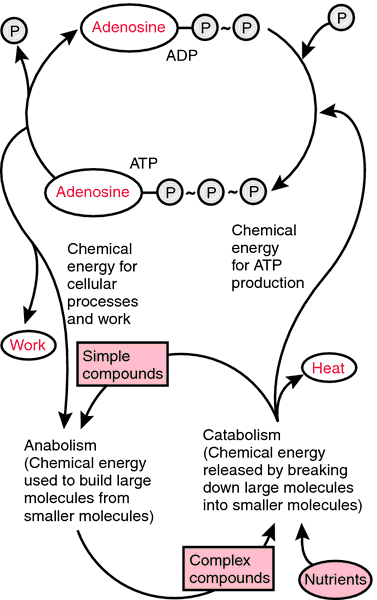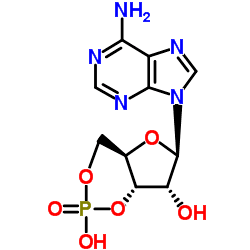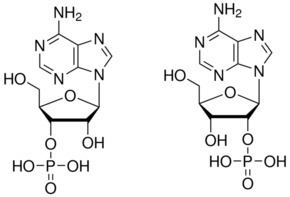Formula C10H14N5O7P Boiling point 798.5 °C | Molar mass 347.2212 g/mol Appearance white crystalline powder | |
Amp adenosine monophosphate in bodybuilding
Adenosine monophosphate (AMP), also known as 5'-adenylic acid, is a nucleotide that is used as a monomer in RNA. It is an ester of phosphoric acid and the nucleoside adenosine, which does not have the typical high energy bond of the so called adenosine monophosphate ("AMP") that arises on the hydrolysis of ATP. AMP consists of a phosphate group, the sugar ribose, and the nucleobase adenine. As a substituent it takes the form of the prefix adenylyl-.
Contents
- Amp adenosine monophosphate in bodybuilding
- Adenosine monophosphate meaning
- Production and degradation
- cAMP
- References
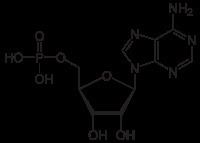
Adenosine monophosphate meaning
Production and degradation
AMP can be produced during ATP synthesis by the enzyme adenylate kinase by combining two ADP molecules:
2 ADP → ATP + AMPOr AMP may be produced by the hydrolysis of one high energy phosphate bond of ADP:
ADP → AMP + PiAMP can also be formed by hydrolysis of ATP into AMP and pyrophosphate:
ATP → AMP + PPiWhen RNA is broken down by living systems, nucleoside monophosphates, including adenosine monophosphate, are formed.
AMP can be regenerated to ATP as follows:
AMP + ATP → 2 ADP (adenylate kinase in the opposite direction) ADP + Pi → ATP (this step is most often performed in aerobes by the ATP synthase during oxidative phosphorylation)AMP can be converted into IMP by the enzyme myoadenylate deaminase, freeing an ammonia group.
In a catabolic pathway, adenosine monophosphate can be converted to uric acid, which is excreted from the body.
cAMP
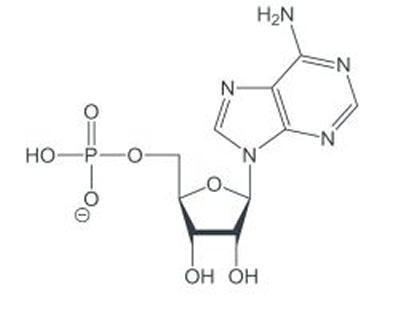
AMP can also exist as a cyclic structure known as cyclic AMP (or cAMP). Within certain cells the enzyme adenylate cyclase makes cAMP from ATP, and typically this reaction is regulated by hormones such as adrenaline or glucagon. cAMP plays an important role in intracellular signaling.
